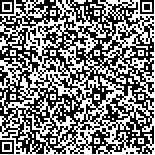|
|
| |
|
|
| 本文已被:浏览 1742次 下载 1330次 |

码上扫一扫! |
|
|
| 西药联合理气中药对糖尿病大鼠胃排空延迟的影响及其机制研究 |
|
张毅宏1, 杨国莉1, 付莹1, 张钊2, 曹泽伟2, 张俊1, 王天锡2, 郭娜2, 高俊琴1
|
|
1.天津市北辰医院消化内科, 天津 300400;2.天津市南开医院消化内科, 天津 300100
|
|
| 摘要: |
| [目的] 探讨促胃肠动力西药联合理气中药对糖尿病大鼠胃排空延迟的影响及其机制。[方法] 70只7周龄雄性SD大鼠随机分为两组:正常组(A组,n=10),模型组(n=60).模型组大鼠首先通过腹腔内注射四氧嘧啶建立糖尿病模型,造模成功大鼠随机分为4组:对照组(B组,n=15)、理气中药治疗组(C组,n=15)、伊托必利治疗组(D组,n=14)、伊托必利联合理气中药治疗组(E组,n=14).依照各组要求,每日予以相应药物灌胃,饲养24周后,全部大鼠行13C胃固体半排空实验,记录胃半排空时间,处死大鼠并取材,进行苏木-伊红(HE)和神经元型一氧化氮合酶(nNOS)免疫组化染色,观察胃壁病理改变。[结果] 1)与A组大鼠相比,B组、C组、D组、E组大鼠胃固体半排空时间明显延长(P<0.01).2)C组、D组、E组大鼠胃排空时间较对B组明显减少(P<0.05); E组大鼠胃排空时间较D组及C组大鼠明显减少(P<0.01).3)HE染色结果表明,与A组大鼠相比,B组、C组、D组、E组大鼠胃环肌及纵肌变薄,肌间神经丛数量减少,免疫组化nNOS表达明显减少(P<0.05).4)D组大鼠肌间神经丛数目较B组明显增加(P<0.05),而C组及E组大鼠肌间神经丛数目明显高于D组(P<0.05),且E组大鼠nNOS阳性神经丛数明显高于D组(P<0.05).[结论] 规律应用理气中药,可明显促进糖尿病大鼠胃排空,且和伊托必利联合应用,可获得更佳效果。实验结果表明其对平滑肌及肌间神经丛有一定保护作用,并可促进nNOS的表达,此可能是其的作用机制。 |
| 关键词: 理气中药 肌间神经丛 糖尿病 胃排空 |
| DOI:10.11656/j.issn.1672-1519.2016.06.12 |
| 分类号: |
| 基金项目:天津市北辰区科技发展计划项目(BCWS2011-05). |
|
| Study on the mechanism and the effects of prokinetic agents combined with Chinese herbs on the delayed gastric emptying in diabetic rats |
|
ZHANG Yi-hong1, YANG Guo-li1, FU Ying1, ZHANG Zhao2, CAO Ze-wei2, ZHANG Jun1, WANG Tian-xi2, GUO Na2, GAO Jun-qin1
|
|
1.Department of Dastroenterology, Tianjin Beichen Hospital, Tianjin 300400, China;2.Department of Dastroenterology, Tianjin Nankai Hospital, Tianjin 300100, China
|
| Abstract: |
| [Objective] To observe the effects of prokinetic agents combined with Chinese herbs on the delayed gastric emptying in diabetic rats and the underlying mechanism. [Methods] Totally 70 male SD rats were randomly divided into two groups: normal group (group A, n=10) and model group (n=60). The rats of model group was established as diabetes model by intraperitoneal injection of alloxan. The successful model rats were divided into four groups: control group (group B, n=15), Chinese herbs treatment group (group C, n=15), Itopride treatment group (group D, n=14), Itopride combined with Chinese herbs treatment group (group E, n=14). According to the requirements of each group, the corresponding drugs were given to the stomach every day. After 24 weeks of feeding, all rats were given 13C-gastric half-emptying time. Then all rats were killed. HE and nNOS immunohistochemical staining were used to observe the pathological changes of gastric wall. [Results] 1) Compared with the rats in group A, the gastric emptying time of all rats in model group (group B, C, D and E) were prolonged (P< 0.01). 2) Compared with group B, the gastric emptying time in rats of group C, D and E were significantly reduced (P<0.05). Compared with Group D and C, they were significantly reduced in group E (P<0.01). 3) Compared with group A, the gastric smooth muscle cell in the model group became thinner, and the number of muscle plexus and the expression of nNOS in gastric smooth muscle of rats were significantly decreased in group B, C, D and E. 4) The number of muscle plexus in group B was significantly higher than that in group D, while the number in group group D was significantly lower than that in C and group E. Meanwhile, the number of nNOS positive nerve plexus in group D was significantly lower than that in group E. [Conclusion] Combined with Chinese herbs, prokinetic agents can promote the gastric emptying in diabetic rats effectively, and the effects are better than that of single use of Chinese herbs or prokinetic agents. The mechanism may correlated with its protective effects on smooth muscle and myenteric nerve plexus. |
| Key words: Chinese herb myenteric nerve plexus diabetic gastric emptying |
|
|
|
|
